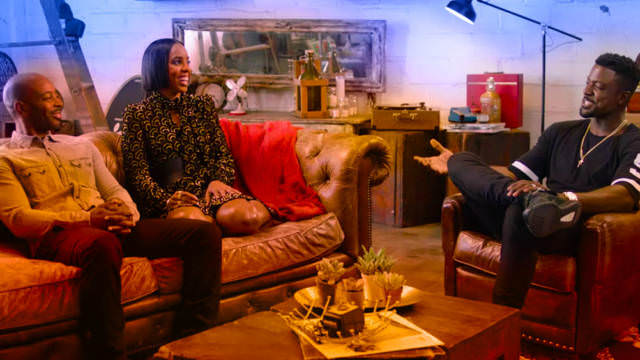Riot Games co-founders Brandon Beck and Marc Merrill announced changing their roles in the company to focus more on game development.
“When we founded Riot 11 years ago, we spent virtually every waking hour of the day (and night!) thinking about how to make League of Legends as great of an experience as possible,” they wrote in a blog post. “But this growth also meant that the majority of our time is allocated to ‘managing’ the company rather than focusing on creating incredible experiences for players, which is what we really love to do.”
Taking over their responsibilities will be CFO Dylan Jadeja, CTO Scott Gelb and president Nicolo Laurent. Their blog post also hinted at a new game from the studio, saying they look forward “to finally put the ‘s’ in Riot Games.”
Kwon Oh-Hyun, CEO of Samsung Electronics and Samsung Display, announced his retirement despite record-setting profits this year. The news comes after a major political corruption scandal and the arrest of Jay Y. Lee, the grandson of the company’s founder in August.
“It is something I had been thinking long and hard about for quite some time. It has not been an easy decision, but I feel I can no longer put it off,” said Oh-Hyun. “As we are confronted with unprecedented crisis inside out, I believe that time has now come for the company start anew, with a new spirit and young leadership to better respond to challenges arising from the rapidly changing IT industry.”
Oh-Hyun has served at Samsung for the past 32 years, starting out in 1985 as a semiconductor researcher. He will stay on until March 2018 and will not seek re-election to the company’s board of directors.
Millennial Esports Corporation has brought on Bob Reif to fill an unspecified executive position, claiming a general ramp-up of the company’s executive team as it attempts to drop the “start-up” moniker.
Reif most recently served as CMO for the Indy Race League and EVP for the Indianapolis Motor Speedway. Before working in the motor sports industry, he worked with the St. Louis Rams as their CMO and CRO for 12 years, helping the team grow from a value of $220 million to $3.5 billion.
Millennial Esports also announced the departure of its co-founder Chad Larsson, who plans to establish a new esports team franchise to partner with the company.
“With the unique confluence of events in today’s esports world, I have been feeling the need to reconnect with the aspects of esports that got me involved in the first place,” said Larsson. “With that in mind, I am already working on a number of new projects which will all hopefully in one way or another involve Millennial Esports.”
A+E Networks is reconfiguring its ad sales department, citing a plan to move “to a demo-agnostic, fully integrated, cross platform selling organization.” Amy Baker will lead a newly formed client strategy and insights team and Lance Still will lead The Bridge and The Build, the network’s internal content marketing agency and ad sales team, respectively.
According to a Reuters report, Disney plans to lay off 200 employees from several of its cable networks including ABC. The source however emphasized that ESPN would be unaffected. This is the second round of layoffs for the media conglomerate—Disney shrank its animation team by 250 positions in September.
Redbox has hired Jason Kwong as their chief strategy and business development officer. Previously, Kwong has worked at Fullscreen Media as senior vice president of strategy, program planning and acquisitions.
Paul Graham, Burberry’s vice president of operations, has joined Versace as their global CMO. He had been with Burberry as their vice president of engagement marketing since 2014.
Eighteen senior-level employees at the Staples Center, Microsoft Theater and LA Live have been promoted, including five new senior vice presidents. Laura Geery-Larson holds the new title of senior vice president of telecommunications and IT, Christy Castillo Butcher is now senior vice president of booking and events, Wade Loewe is now senior vice president of broadcast/multimedia productions, Matt Rosenfeld is now senior vice president of sales and Michele Kajiwara is now senior vice president of premium sales and services.
Netflix has poached Monique Meche from Amazon, hiring her as their vice president of global public policy, where she will lead the company’s efforts to comply with government regulations across the 190 countries it services.
Meche held the same position at Amazon since she joined the e-commerce giant in 2013, and before that worked at ArcelorMirral in Luxembourg as their vice president of government affairs and corporate social responsibility.
HitPoint Studios has a new president: Ariella Lehrer. The move follows an announcement of a multi-year development partnership between HitPoint and Legacy Games, a studio that Lehrer founded.
“After more than two years working in AR, we’re just starting to scratch the surface of what will be possible with these new platforms,” said Paul Hake, CEO of HitPoint Studios. “As technologists, we’re always striving to explore new ways to engage our audiences in meaningful ways. Ariella’s business and product savvy, and overall vision for our industry positions HitPoint to become a leader in AR, a burgeoning ‘new frontier.’”
Brian Mullins will be resigning as CEO of augmented-reality startup Daqri, to be replaced by Roy Ashok, the company’s current chief product officer. A founder of the company, Mullins will remain on Daqri’s board of directors for the forseeable future.
“Brian Mullins has built Daqri from an idea to an augmented reality leader with innovative products that are transforming everything from workplaces to the automotive industry,” said Greg Casserly, Daqri board chair. “We’re now entering phase two of the company’s growth, which will be characterized by product shipments at scale, a growing customer base and all the opportunities and associated operational complexities that brings.”
Ashok has worked at Daqri for two years, and was the company’s very first chief product officer. Before assuming the responsibilities of CEO, he will oversee the shipment of Daqri’s Smart Glasses later this month.
Nokia has laid off over 300 workers and cancelled its OZO VR camera, citing the industry’s “slower-than-expected” growth. The technology firm will instead shift its focus to its digital health and licensing operations, claiming it will “optimize” its investment in virtual reality.
Intel has shuttered its augmented-reality glasses manufacturer Recon, after cutting 30 positions from the unit earlier this year. It will still fulfill existing purchase orders for the AR goggles, but will not take any new ones.
Danny Sullivan has joined Google to educate the public on common search issues and take feedback on ways the company can improve.
“My title is still being determined, but the position will be to serve as a sort of public liaison for search,” Sullivan said in a blog post. “The goal is to increase the connection between those at Google who work hard on search each day and the public that depends on Google for answers.”
Sullivan is a long-standing search journalist of high regard, and retired from Third Door Media earlier this year. He has also held positions at the Los Angeles Times and Maximized Online, and published a book entitled A Webmaster’s Guide To Search Engines.
The Data and Marketing Association has announced four new members to their board of directors: Julie Bernard, CMO of Verve; Michael L. Iaccarino, chairman and CEO of Infogroup; John McDonald, executive vice president of DigitasLBi New York and Mike Nazzaro, CEO of Claritas.
“Working towards a shared vision, DMA and its board address the challenges and opportunities currently facing advertising, marketing, media and technology,” said DMA CEO Tom Benton. “It is this collaborative spirit which has carried DMA through 100 years of advocacy for a community which builds lasting relationships with consumers based on truth, results and trust.”
The board’s new elections come as the DMA announces its Data Standards 2.0 initiative, a collaboration on digital marketing best practices.
AdColony has appointed Tim O’Neil as vice president of performance advertising for North America, a newly created position.
“I’ve always admired AdColony’s SDK video platform and the results and scale I have seen it produce for developers,” O’Neil said. “The performance advertising market is booming, and AdColony has the technology, team and existing relationships to drive incredible results.”
Before joining the mobile-advertising platform, O’Neil worked at TUNE as their head of strategic sales, and prior to that held executive positions at Pocket Change and InMobi.
The Los Angeles Times has hired Lewis D’Vorkin as their editor in chief, after ousting several senior staff members in August.
“Lewis is one of the most transformational editors and digital innovators in the media industry and is exceptionally qualified to lead the evolution of the Los Angeles Times newsroom,” said Ross Levinsohn, LA Times publisher. “He knows how to build a competitive, sustainable media business with global clout while preserving the highest standards of journalistic integrity.”
Previously, D’Vorkin served at Forbes as their chief product officer, where he expanded the company’s native advertising options, introducing a branded-content studio known as BrandVoice. Prior to that, he worked at The Wall Street Journal, Newsweek and The New York Times.
Corsair has appointed Jason Cahilly to their board of directors in a non-executive capacity, signifying an increased focus on esports.
“This is an exciting time for the development of eSports and its players, who are only just beginning to gain the recognition they deserve as true athletes of exceptional skill,” said Cahilly.
Cahilly joins Corsair from the NBA, where he served as their chief strategic and financial officer since 2013.
Accenture Operations has tapped Nikki Mendonça for president of intelligent marketing operations. In the role, Mendonça will take advantage of predictive analytics to grow Accenture’s client base.
“Nikki is a proven business leader and digital marketing strategist and I’m excited that she will lead and help us to build our Intelligent Marketing Operations business,” said Debbie Polishook, group chief executive of Accenture Operations. “Her arrival comes at a strategically important time in building this capability as we continue to develop innovative solutions that combine platform, analytics, artificial intelligence, machine learning and other core technologies to help clients enhance their marketing impact.”
Mendonça has worked in strategic marketing for a quarter-century, most recently as president of OMD Worldwide for the EMEA region.
The National Hockey League has hired Joseph Mangano as their senior director of national retail sales and marketing, where he will oversee the NHL’s retail relationships globally.
Sean Barror has joined Excel Sports Management as their first-ever head of property sales. He will lead the brand’s efforts to expand into third-party commercial sales. Previously, Barror served at WME-IMG as senior vice president of global partnerships.
Skydance Media has named Bill Damaschke as president of animation and family entertainment, a new position in the company. This comes after the March announcement of a partnership between Skydance and Ilion Animation Studios to produce multiple feature films over the next few years.
“In a very short time, Skydance has made a real commitment to the animation business by bringing best-in-class creative leadership teams into its first two fantastic feature projects,” said Damaschke.
Previously, Damaschke worked at DreamWorks for 20 years, rising to the position of chief creative officer. He oversaw the release of Madagascar, Kung Fu Panda and How to Train Your Dragon, among others. Damaschke also oversaw production of the “Shrek The Musical” live theatrical show.
DreamWorks Feature Animation has hired Abhijhay Prakash as their latest chief operating officer, where he will focus on furthering the studio’s partnership with Universal Pictures in preparing for the release of How To Train Your Dragon 3 in 2019.
“Abhijay is one of the most respected executives in the Universal family, recognized for his integrity, business acumen and most recently for his invaluable contributions to Focus Features,” said Chris deFaria, president of DreamWorks Animation Group.
Before joining DreamWorks, Prakash held the same position at Focus Features, and prior to that served at Universal Pictures as executive vice president of film strategy and operations.
Several of General Electric’s vice chairs have announced their retirement, including Beth Comstock. She will be closing out a 27-year career at the company, having led GE’s Business Innovations unit, and additionally serving as the brand’s chief marketing officer. Also retiring are John Rice and Jeff Bornstein.
“We have relied on Beth to see around corners and lead us to new ideas and invention,” said John Flannery, GE’s chairman and CEO. “Her efforts to push GE into the future have been essential to GE’s growth strategy; including identifying the potential of the industrial internet and helping transform GE into a digital industrial company.”
The three vice chairs will stay on in their current roles until the end of the year.
After a The New York Times report revealed sexual harassment allegations against The Weinstein Company co-founder Harvey Weinstein, the company has announced Weinstein’s dismissal. This comes just days after Weinstein announced that he would be taking a leave of absence from the film-production giant.
According to a statement released by the company, this shift in action came “in light of new information about misconduct by Harvey Weinstein that has emerged in the past few days.”
Lance Maerov, one of the company’s board of directors, told The New York Times that Weinstein violated their code of conduct in the last week, but did not clarify any further.
Additionally, an anonymous source told the Associated Press that The Weinstein Company would change its name in the near future.
Roommate matchmaker Silvernest has brought on Barbara O’Connor as chief marketing officer, announcing plans to draw on social media influencers to market the service to baby boomers.
“Barb’s impressive background driving programs for some of the largest consumer tech and real estate companies in the country is exactly what we need at this critical point in our growth,” said Wendi Burkhardt, CEO of Silvernest.
O’Connor previously worked as chief marketing officer of Move, parent company to real estate websites such as realtor.com and SeniorHousingNet. Beforehand, she served at Yahoo! as its vice president of marketing, and held a senior-level marketing position at Apple.
Calvin Klein has announced that Jake Gyllenhaal will star in the brand’s latest series of ads for their Eternity perfume, alongside Liya Kebede.
The campaign will consist of both print ads and TV spots, and “will focus on ETERNITY Calvin Klein’s longstanding ideas of romance, love, intimacy and commitment.”
(Editor’s Note: This post will be updated daily until Friday, October 13. Have a new hire tip? Let us know at editorial@alistdaily.com.)
Job Vacancies
| Director, Marketing |
Razer USA, Ltd. |
Irvine, CA |
| Director, Marketing |
Sony Music Entertainment |
New York, NY |
| Brand Manager |
BANDAI NAMCO Entertainment America Inc. |
Santa Clara, CA |
| Director, Product Marketing |
Facebook |
Menlo Park, CA |
| Sr. Director, Enterprise Marketing |
PetSmart |
Phoenix, AZ |
Make sure to check back for updates on our Jobs Page.








